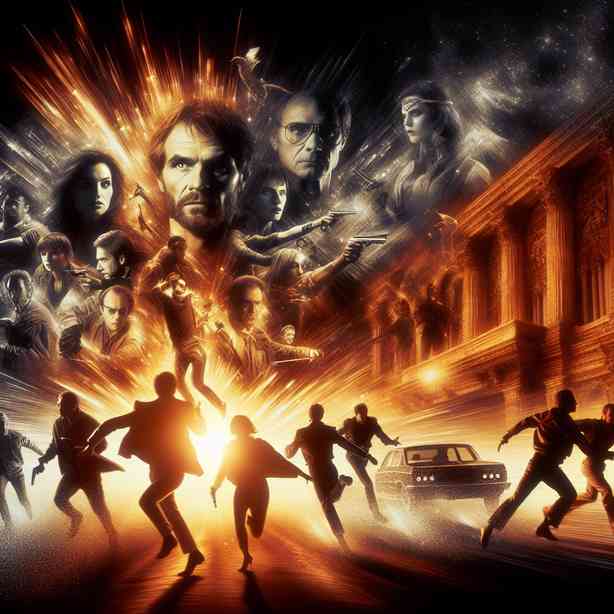
In our increasingly interconnected world, moments that can transpire in real life often resonate with the cinematic experiences we view on screens. The title “That Scene That Played Like a Movie” captures the essence of such moments where reality surpasses fiction in drama, spontaneity, or emotional depth. It serves as a reminder that life often unfolds in ways that evoke a sense of storytelling, with individuals playing roles that could easily belong in a compelling film.
Let’s take a deeper dive into what makes these moments so impactful, and how they connect with the broader narrative of our lives. Life, in its essence, mirrors the structure of a well-crafted story. It comprises different acts, filled with characters who each have their unique arcs, conflicts, and resolutions. Understanding this parallels between real life and film can help us appreciate the beauty in our everyday experiences and the emotional truths they hold.
Every movie starts with an inciting incident, a moment that propels the characters into action. In our lives, these moments can manifest in various ways—a sudden change in career, an unexpected reunion with a long-lost friend, or a serendipitous encounter at a coffee shop. These seemingly ordinary events can quickly transform into significant milestones that alter the course of our lives. For instance, consider the story of someone who hesitantly attends a networking event only to encounter a mentor who eventually guides them toward their dream career. The power of such moments often lies in their unpredictability, evoking a sense of excitement and possibility.
As we journey through these experiences, we often find ourselves embodying different roles—sometimes as the protagonist, and other times as a supporting character. Each interaction and relationship adds depth to our narrative, much like characters in a film contribute to the overarching storyline. Think about the friendships that blossom in college, the connections made in the workplace, or the families that gather during holidays. Each relationship holds the potential to alter our perceptions and choices, steering our life in new directions.
Conflict is another critical aspect of storytelling, and it plays a substantial role in shaping our experiences. In films, conflict is essential for character development and advancing the plot. Similarly, in our lives, challenges and obstacles serve as crucial elements that foster growth and resilience. A personal setback—such as the loss of a job—can lead to unexpected opportunities or self-discovery. The lessons gleaned from these trying moments often shape our values and ambitions moving forward.
The resolution of conflicts also mirrors the narrative arc of a film. After the struggles, there is typically a period of reflection and growth, leading to new beginnings or a deeper understanding of oneself. This theme resonates with many personal stories; individuals who have faced adversities often emerge with newfound perspectives, robust connections, or a renewed sense of purpose. They learn to craft a narrative that highlights resilience, enabling them to approach new challenges with a fortified spirit.
As we reflect on the moments in our lives that play out like scenes from a movie, it’s vital to acknowledge the role of emotions. Films captivate us not just through their plots but through their ability to evoke feelings. The same can be said for our lived experiences. Joy, sorrow, love, and even anger are emotions that punctuate our days and contribute significantly to the richness of our stories. Take a moment to remember a special event—perhaps a wedding or a graduation—where emotions ran high and the air buzzed with joy and hope. These occasions become etched in our memories, much like iconic scenes from our favorite films.
Capturing and sharing these cinematic moments can also foster connections and inspire others. In a world where social media allows us to document our lives instantaneously, we have the power to share these snippets of joy, triumph, or vulnerability. A simple photo or video can encapsulate an experience, provoking discussions and connecting with people who resonate with those emotions. When we share our stories, they no longer belong solely to us; they become a collective narrative that others can draw inspiration from or find comfort in.
Moreover, storytelling has the potential to empower individuals and communities. Just as films can illuminate societal issues or bring about change, our personal narratives can serve as catalysts for awareness and action. Sharing our experiences, especially those that highlight underrepresented voices or unique perspectives, can catalyze dialogue and inspire empathy. This storytelling journey fosters an understanding that transcends individual experiences and becomes a shared human narrative.
There’s also an element of nostalgia that accompanies making sense of our lives through cinematic lenses. Recalling formative moments, we often find comfort in revisiting past experiences, akin to rewatching a beloved movie. These reflections prompt us to appreciate where we stand in life and the paths we have taken. Understanding our past helps us navigate our present and envision our future, just like a film that culminates in a hopeful sequel.
In conclusion, the moments that resemble scenes from movies are rich with meaning, lessons, and emotional depth. By embracing the unexpected, navigating conflicts, and understanding the roles we play in our stories, we come to appreciate the beauty of our existence and the connections we forge with those around us. Each scene, every interaction, and emotion contributes to a larger narrative that, when viewed through a cinematic lens, can inspire, comfort, and empower both ourselves and others. Life indeed has a way of playing out like a deeply woven movie, teaching us the importance of storytelling in our everyday experiences. As we move through life, let us cherish these cinematic moments, knowing they carry the power to shape our journey and uplift those who share in their beauty.


